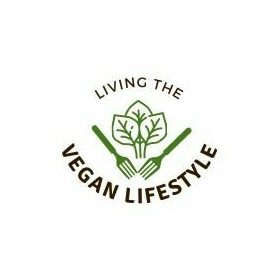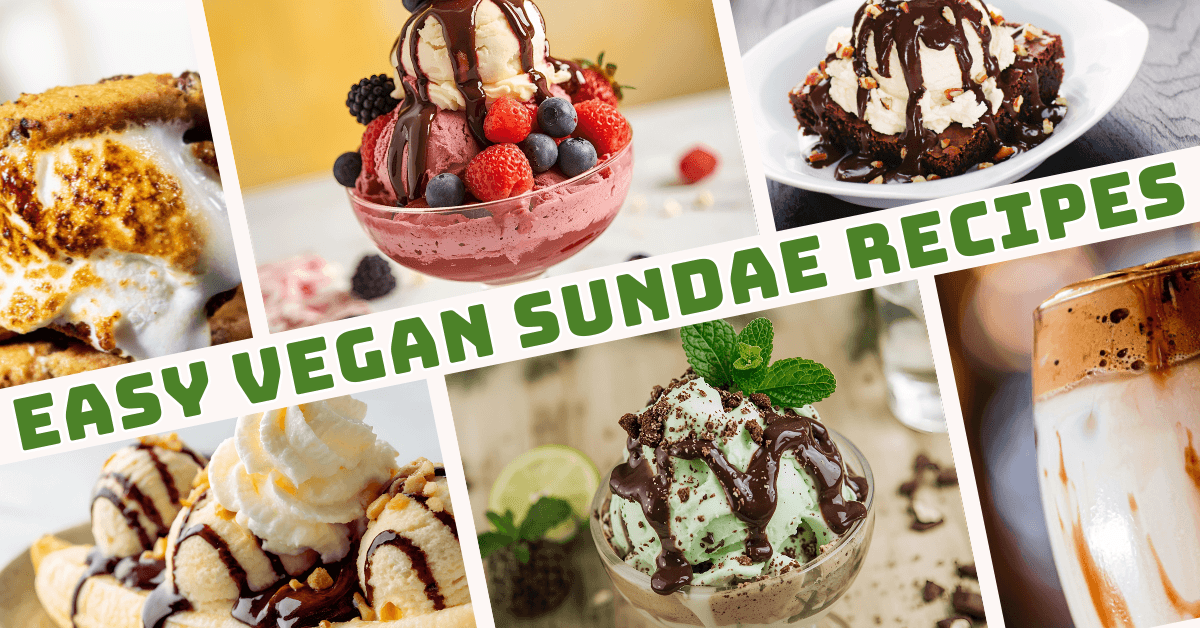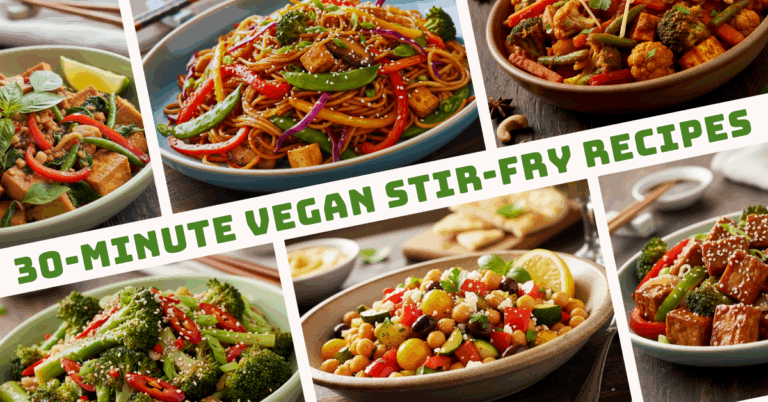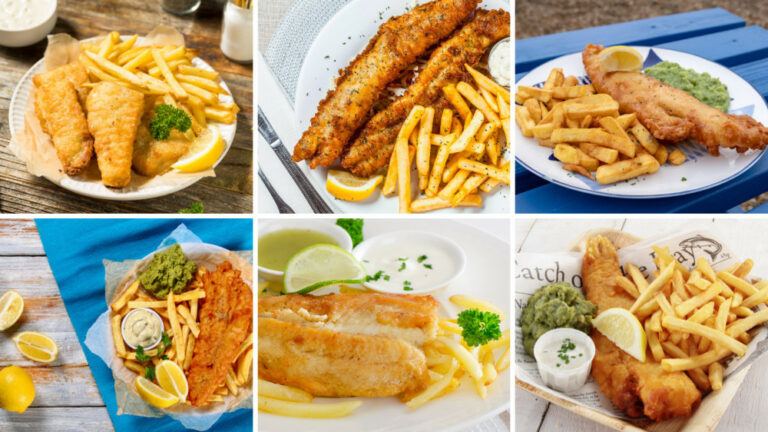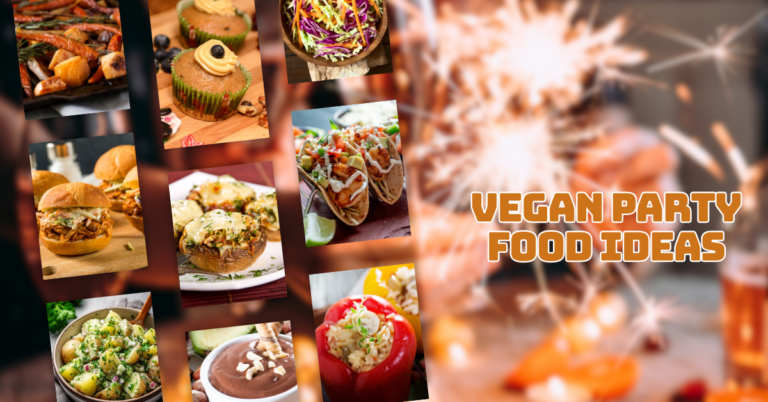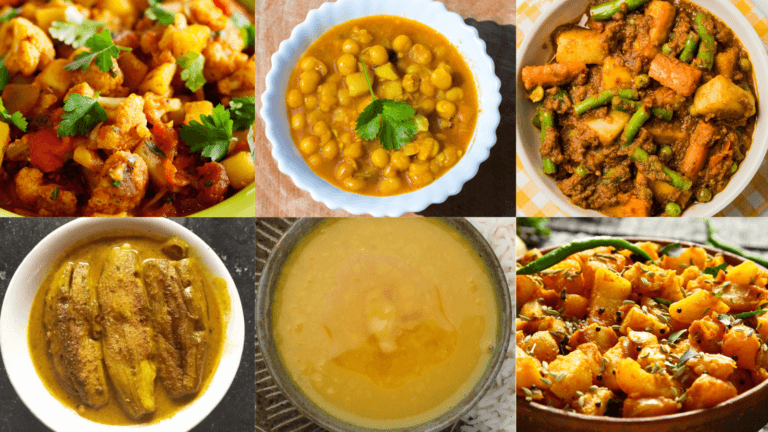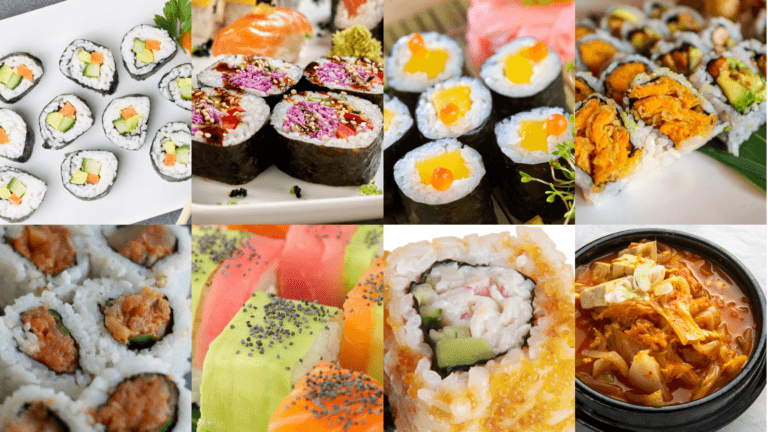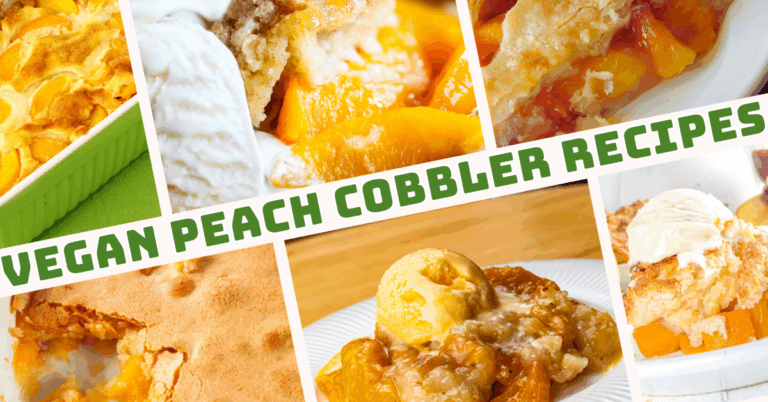Easy Vegan Sundae Recipes For Instant Joy And Flavour
Who doesn’t love a sundae? It’s creamy, sweet, and always comforting. But what if you’re vegan? The good news is, you don’t have to give up this classic treat.
Vegan sundaes are just as decadent, indulgent, and fun. The best part? They’re kinder to animals, healthier for your body, and better for the planet. This guide will explore everything about vegan sundaes.
Discover how simple and delightful it is to create indulgent treats with these easy-to-follow vegan sundae recipes. We’ll keep it easy, creative, and absolutely delicious. Ready to dig in? Let’s make your next dessert unforgettable.
Why Choose Vegan Sundaes?
Before we dive into recipes, let’s talk about why vegan sundaes are so special.
1. Dairy-Free Goodness
Vegan sundaes replace traditional dairy ice cream with creamy alternatives like almond, oat, soy, coconut, or cashew milk. These bases are rich and satisfying without the heaviness of dairy. You can enjoy indulgence without discomfort while making a compassionate choice for animals.
2. Healthier Ingredients
Vegan toppings often bring natural nutrition. Fresh fruit delivers vitamins, nuts add healthy fats, seeds provide fibre, and dark chocolate offers antioxidants.
These wholesome additions taste amazing while boosting wellness, transforming your sundae into a treat that’s both indulgent and nourishing.
3. Eco-Friendly Choice
Plant-based desserts are kinder to the environment. Dairy production requires significant water, land, and energy, while vegan sundaes avoid that impact.
By choosing plant-based, you help conserve resources, lower emissions, and make each delicious scoop a small act of sustainability.
4. Inclusive Treat
Vegan sundaes are desserts everyone can share. They are ideal for folks who are plant-based, have dairy allergies, or are lactose intolerant.
At parties or family gatherings, these sundaes ensure no one feels excluded, creating an experience of joy and togetherness.
5. Endless Varieties
Vegan sundaes offer limitless creativity. Mix tropical fruits with coconut ice cream, add cookies to almond milk scoops, or create nutty and coffee-infused layers. With so many plant-based bases, sauces, and toppings, every sundae can be unique, exciting, and fun.
6. Guilt-Free Indulgence
Unlike dairy-heavy versions, vegan sundaes feel lighter and easier on digestion. Many ingredients are naturally lower in cholesterol and saturated fat.
That means you can enjoy creamy, decadent flavour without the guilt, keeping your body satisfied and energized after dessert.
7. Kid-Friendly Fun
Vegan sundaes are perfect for children. With colourful fruits, sprinkles, and fun toppings, they turn dessert into an engaging, interactive experience. Kids can build their own creations, encouraging creativity while enjoying a dairy-free, healthier treat.
8. Easy To Make At Home
Vegan sundaes are quick and straightforward to prepare. With store-bought vegan ice cream or homemade bases, you can mix and match sauces, fruits, and toppings. This makes them an accessible, stress-free dessert option for any occasion.
Vegan Sundae Recipes
1. Classic Chocolate Fudge Vegan Sundae
The Classic Chocolate Fudge Vegan Sundae is indulgent, creamy, and completely dairy-free. It delivers rich chocolate flavour paired with smooth vegan ice cream and crunchy toppings. This recipe is simple, quick, and perfect for dessert lovers who want a plant-based twist on a timeless treat.
Prep time: 10 minutes | Cook time: 5 minutes | Total time: 15 minutes | Servings: 2
Ingredients
- Coconut milk chocolate ice cream (or any vegan chocolate ice cream): 2 cups
- Dairy-free chocolate chips: ½ cup
- Coconut cream: ¼ cup
- Maple syrup: 2 tablespoons
- Walnuts: ¼ cup, chopped
- Vegan whipped cream: ½ cup
- Vegan-friendly maraschino cherries: 2
Method
- Over low heat, melt the chocolate chips and coconut cream in a small saucepan, stirring until smooth. To make it sweeter, add maple syrup.
- Scoop the vegan chocolate ice cream into two bowls or sundae glasses.
- Pour the warm chocolate fudge sauce generously over the ice cream.
- Top with whipped cream, sprinkle chopped walnuts, and crown with a cherry.
- Serve immediately and enjoy your creamy, decadent vegan sundae.
Nutrition Facts (per serving)
- Calories: 380
- Carbohydrates: 42g
- Protein: 5g
- Fat: 22g
- Fibre: 4g
- Sugar: 29g
Health Benefits
This sundae is dairy-free, making it easier on digestion and suitable for those with lactose intolerance. Coconut cream provides healthy fats, walnuts add omega-3s, and dark chocolate offers antioxidants, making your indulgence both satisfying and beneficial in moderation.
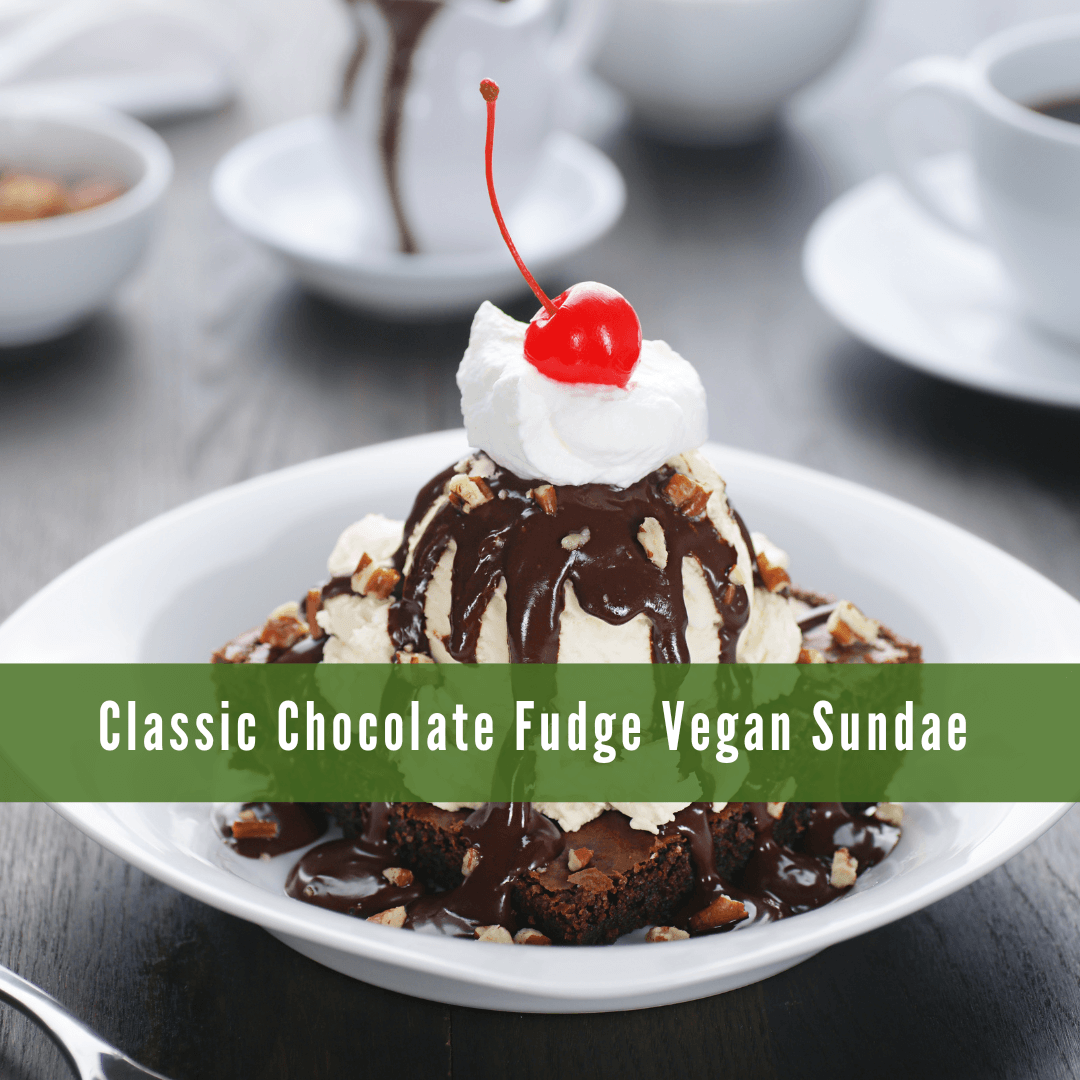
2. Tropical Paradise Sundae With Mango And Coconut
This tropical delight is one of the many delicious vegan sundae recipes you can easily make at home for a refreshing, fruity treat.
Sweet mango, creamy coconut ice cream, and tropical toppings create a vibrant, fruity sundae. It’s light, indulgent, and completely dairy-free, making it a tropical treat for everyone.
Prep time: 10 minutes | Cook time: 5 minutes | Total time: 15 minutes | Servings: 2
Ingredients
- Coconut milk ice cream: 2 cups
- Mango: 1, peeled and diced
- Coconut: 2 tablespoons, shredded and toasted
- Pineapple syrup or blended pineapple purée: 2 tablespoons
- Macadamia nuts or cashews: 2 tablespoons, chopped
- Vegan whipped cream for topping
- Fresh mint leaves for garnish
Method
- Scoop coconut milk ice cream into two bowls or sundae glasses.
- Top each scoop with diced mango and drizzle with pineapple syrup or puree.
- Sprinkle toasted coconut and chopped nuts over the ice cream.
- Sprinkle some vegan whipped cream on top
- Serve immediately for a fresh, tropical dessert experience.
Nutrition Facts (per serving)
- Calories: 320
- Carbohydrates: 44g
- Protein: 4g
- Fat: 16g
- Fibre: 5g
- Sugar: 28g
Health Benefits
This sundae is packed with vitamin C from mango, healthy fats from coconut and nuts, and fibre to support digestion. It’s dairy-free, light, and naturally sweetened, making it a refreshing, guilt-free tropical treat.
Want to Share Your Passion for Vegan Living?
Discover how easy and fulfilling vegan living can be —
from recipes and travel to lifestyle and sustainability tips.
Read this blog post next:
How to Start a Vegan Blog (and Turn Your Passion into Purpose).
3. Vegan Banana Split Sundae
This delicious creation is a standout among vegan sundae recipes, bringing a fun, nostalgic twist to a classic dessert everyone will enjoy.
Ripe bananas, creamy vegan ice creams, and colourful sauces combine for a nostalgic, fun dessert. It’s dairy-free, easy to make, and perfect for sharing with friends or family.
Prep time: 10 minutes | Cook time: 5 minutes | Total time: 15 minutes | Servings: 2
Ingredients
- Banana: 1, sliced lengthwise
- Vanilla oat milk ice cream: 1 scoop
- Chocolate coconut milk ice cream: 1 scoop
- Strawberry almond milk ice cream: 1 scoop
- Dairy-free chocolate sauce: v
- Strawberry syrup: 2 tablespoons
- Peanuts or walnuts: 2 tablespoons, chopped
- Vegan whipped cream for topping
- Vegan-friendly maraschino cherries for garnish
Method
- Place the banana slices in a long serving dish or bowl.
- Put in one scoop of vegan strawberry, chocolate, and vanilla ice creams each.
- Drizzle chocolate sauce and strawberry syrup evenly over the scoops.
- Sprinkle with chopped nuts and top with vegan whipped cream.
- Finish with maraschino cherries on top and serve immediately.
Nutrition Facts (per serving)
- Calories: 390
- Carbohydrates: 55g
- Protein: 6g
- Fat: 18g
- Fibre: 6g
- Sugar: 35g
Health Benefits
Bananas provide potassium for heart and muscle health. Nuts supply healthy fats and protein, while the sundae remains dairy-free, making it easier to digest and enjoyable for lactose-intolerant or plant-based eaters.
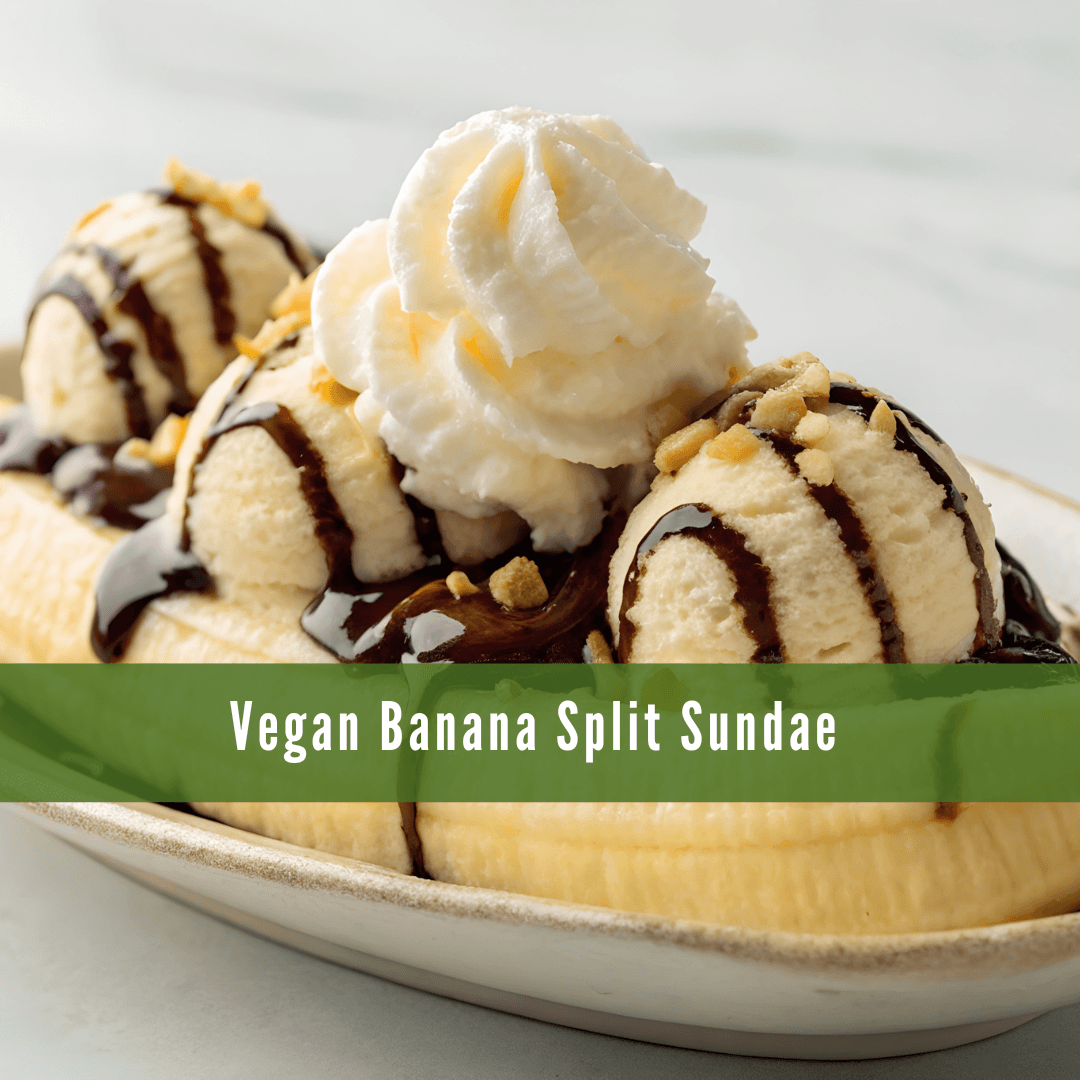
4. Peanut Butter Brownie Sundae
The Peanut Butter Brownie Sundae is a decadent vegan dessert combining creamy ice cream, rich chocolate brownies, and nutty peanut butter. It’s indulgent, dairy-free, and perfect for chocolate lovers who want a plant-based treat without sacrificing flavour.
Prep time: 10 minutes | Cook time: 5 minutes | Total time: 15 minutes | Servings: 2
Ingredients
- Vanilla cashew milk ice cream: 2 scoops
- Vegan brownie squares: 2, chopped
- Peanut butter: 2 tablespoons, slightly warmed
- Vegan chocolate sauce: 2 tablespoons
- Peanuts: 2 tablespoons, chopped
- Vegan whipped cream for topping
- Celtic sea salt: ⅛ teaspoon for garnish (optional)
Method
- Place vanilla cashew milk ice cream scoops in two bowls or glasses.
- Sprinkle chopped brownie pieces evenly over the ice cream.
- Drizzle peanut butter and chocolate sauce generously on top.
- Top with chopped peanuts and a dollop of vegan whipped cream.
- For a decadent, luscious delight, sprinkle with a touch of sea salt and serve right away.
Nutrition Facts (per serving)
- Calories: 450
- Carbohydrates: 48g
- Protein: 9g
- Fat: 26g
- Fibre: 5g
- Sugar: 30g
Health Benefits
Walnuts and cashew ice cream give extra nutrition, and peanut butter offers protein and heart-healthy lipids. This dairy-free dessert supports digestion, satisfies cravings, and delivers energy without lactose or heavy fats.
5. Berry Bliss Sundae
This vibrant treat is a perfect example of vegan sundae recipes that are both refreshing and guilt-free. It combines creamy plant-based ice cream with a medley of berries and a naturally sweet compote. Light, colourful, and dairy-free, this sundae is perfect for anyone craving a refreshing, guilt-free treat.
Prep time: 10 minutes | Cook time: 5 minutes | Total time: 15 minutes | Servings: 2
Ingredients
- Strawberry oat milk ice cream: 2 scoops
- Blueberry coconut milk ice cream: 2 scoops
- Mixed berries (strawberries, blueberries, raspberries): ½ cup
- Berry compote or mashed berries with maple syrup: 2 tablespoons
- Chia seeds: 1 tablespoon
- Almond slivers: 2 tablespoons
- Vegan whipped cream for topping
- Fresh mint leaves for garnish
Method
- Scoop strawberry and blueberry ice creams into two bowls or sundae glasses.
- Spoon the berry compote over the ice cream.
- Sprinkle fresh mixed berries, chia seeds, and almond slivers on top.
- Top with a dollop of vegan whipped cream and decorate with fresh mint leaves.
- Serve immediately for a colourful, refreshing, and healthy dessert.
Nutrition Facts (per serving)
- Calories: 330
- Carbohydrates: 44g
- Protein: 5g
- Fat: 14g
- Fibre: 6g
- Sugar: 30g
Health Benefits
Rich in vitamins and antioxidants, berries promote immunity and heart health. Chia seeds provide fibre and omega-3s, while almond slivers add healthy fats, making this dairy-free sundae both indulgent and nourishing.
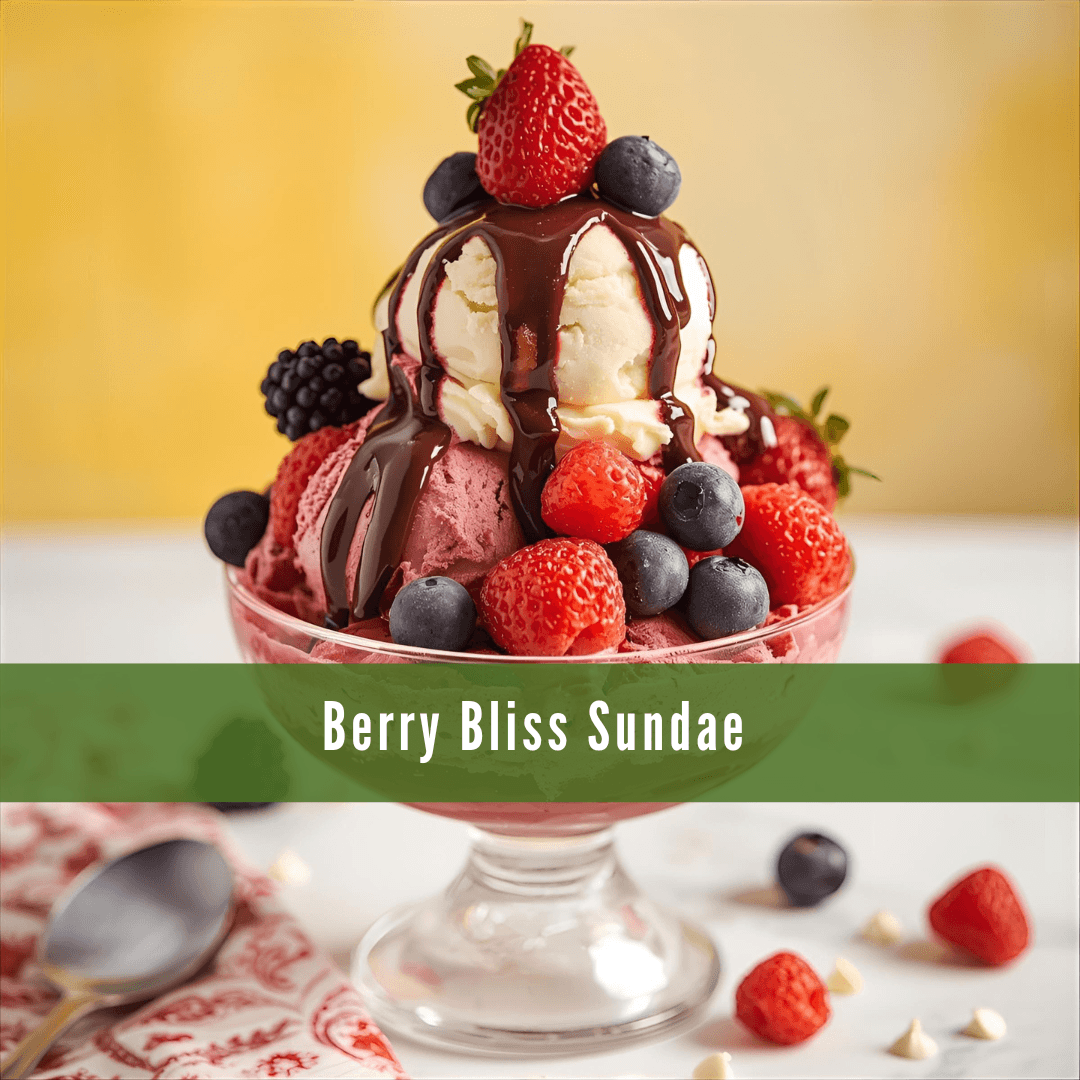
6. Cookie Monster Sundae
The Cookie Monster Sundae is a fun and indulgent vegan dessert. This playful creation is one of the most exciting vegan sundae recipes, combining crunch, chocolate, and creamy plant-based indulgence. Dairy-free and playful, this sundae is perfect for kids or anyone who loves a sweet, crunchy treat.
Prep time: 10 minutes | Cook time: 5 minutes | Total time: 15 minutes | Servings: 2
Ingredients
- Vanilla almond milk ice cream: 2 scoops
- Vegan chocolate chip cookies: ¼ cup, crumbled
- Dairy-free chocolate syrup: 2 tablespoons
- Vegan Oreos: 2 tablespoons, crushed
- Vegan whipped cream for topping
- Vegan chocolate chips for garnish
Method
- Scoop the vanilla almond milk ice cream into two bowls or sundae glasses.
- Sprinkle crumbled chocolate chip cookies and crushed Oreos over the ice cream.
- Drizzle chocolate syrup generously on top.
- Put some chocolate chips on top and a dab of vegan whipped cream on top.
- Serve immediately for a fun, sweet, and crunchy dessert experience.
Nutrition Facts (per serving)
- Calories: 400
- Carbohydrates: 50g
- Protein: 6g
- Fat: 18g
- Fibre: 4g
- Sugar: 32g
Health Benefits
This sundae is dairy-free and easier to digest than traditional versions. Chocolate and nuts provide antioxidants and healthy fats, while cookies add texture, creating a balanced indulgence that satisfies cravings without dairy.
7. Mocha Espresso Sundae
The Mocha Espresso Sundae is a decadent, coffee-flavoured vegan dessert. Creamy oat milk ice cream paired with chocolate sauce and crunchy toppings creates a decadent treat. Dairy-free and energizing, this sundae is perfect for coffee lovers who enjoy a sweet, indulgent dessert.
Prep time: 10 minutes | Cook time: 5 minutes | Total time: 15 minutes | Servings: 2
Ingredients
- Coffee-flavoured oat milk ice cream: 2 scoops
- Dairy-free chocolate sauce: 2 tablespoons
- Cacao nibs: 2 tablespoons
- Almonds: 2 tablespoons, chopped
- Vegan whipped cream for topping
- Chilled espresso: 1 shot (optional)
Method
- Scoop coffee-flavoured oat milk ice cream into two bowls or sundae glasses.
- Drizzle chocolate sauce over each scoop.
- Sprinkle cacao nibs and chopped almonds evenly on top.
- If preferred, drizzle espresso over the sundae and top with a dollop of vegan whipped cream.
- Serve immediately for a creamy, chocolatey coffee treat.
Nutrition Facts (per serving)
- Calories: 350
- Carbohydrates: 38g
- Protein: 6g
- Fat: 18g
- Fibre: 4g
- Sugar: 25g
Health Benefits
Coffee provides natural antioxidants, while almonds add protein and heart-healthy fats. Dairy-free ice cream makes it easier on digestion, offering a guilt-free, energizing, and delicious dessert experience for adults and coffee lovers alike.
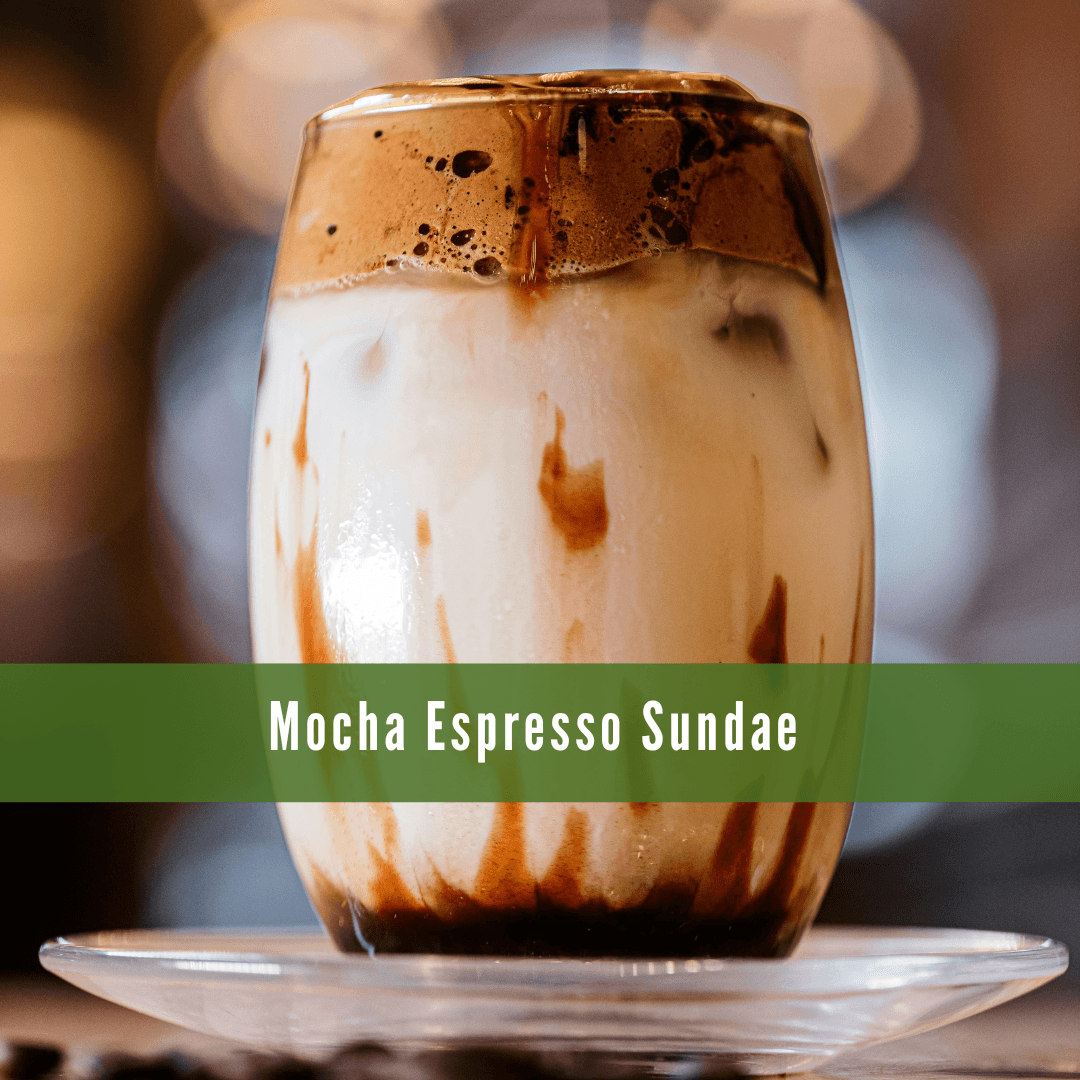
8. Apple Pie Sundae
This warm, comforting treat is a delicious example of vegan sundae recipes that bring classic flavours to a plant-based dessert. Sweet cinnamon-spiced apples, creamy vegan ice cream, and crunchy toppings create a warm, comforting treat. It’s dairy-free, indulgent, and perfect for autumn or any dessert craving.
Prep time: 10 minutes | Cook time: 10 minutes | Total time: 20 minutes | Servings: 2
Ingredients
- Vanilla cashew milk ice cream: 2 scoops
- Apples: 1 cup, diced
- Maple syrup: 1 tablespoon
- Ground cinnamon: ½ teaspoon
- Vegan pie crust or cookies: ¼ cup, crumbled
- Vegan caramel sauce for drizzle
- Vegan whipped cream for topping
Method
- Add the diced apples, maple syrup, and cinnamon to a small pan and cook until the apples are soft.
- Scoop vanilla cashew milk ice cream into two bowls or sundae glasses.
- Spoon warm apples over the ice cream.
- Sprinkle crumbled vegan pie crust or cookies on top.
- Drizzle with vegan caramel sauce, add whipped cream, and serve immediately for a cozy dessert experience.
Nutrition Facts (per serving)
- Calories: 360
- Carbohydrates: 50g
- Protein: 5g
- Fat: 16g
- Fibre: 5g
- Sugar: 32g
Health Benefits
Apples provide fibre and vitamins, while cinnamon offers antioxidants and supports healthy digestion. Cashew milk ice cream adds healthy fats, making this sundae a warming, dairy-free treat that is both satisfying and nourishing.
9. Mint Chocolate Sundae
The Mint Chocolate Sundae is a refreshing vegan dessert that combines cool mint ice cream with rich chocolate. Dairy-free and indulgent, this sundae is perfect for mint lovers seeking a light yet satisfying treat, ideal for warm days or dessert indulgence.
Prep time: 10 minutes | Cook time: 5 minutes | Total time: 15 minutes | Servings: 2
Ingredients
- Mint chocolate chip coconut milk ice cream: 2 scoops of
- Dairy-free chocolate syrup: 2 tablespoons
- Cacao nibs: 2 tablespoons
- Peppermint candies: 2 tablespoons, crushed
- Vegan whipped cream for topping
- Fresh mint leaves for garnish
Method
- Transfer the mint chocolate chip ice cream into two sundae glasses or bowls using a spoon.
- Drizzle chocolate syrup evenly over each scoop.
- Sprinkle cacao nibs and crushed peppermint candies on top.
- Add some vegan whipped cream and some fresh mint leaves as garnish.
- Serve immediately for a cool, refreshing, and indulgent dessert.
Nutrition Facts (per serving)
- Calories: 340
- Carbohydrates: 42g
- Protein: 5g
- Fat: 16g
- Fibre: 4g
- Sugar: 28g
Health Benefits
Mint provides digestive support and a refreshing flavour, while cacao nibs offer antioxidants. Coconut milk ice cream adds healthy fats, making this sundae dairy-free, lighter on digestion, and a guilt-free way to enjoy chocolatey indulgence.
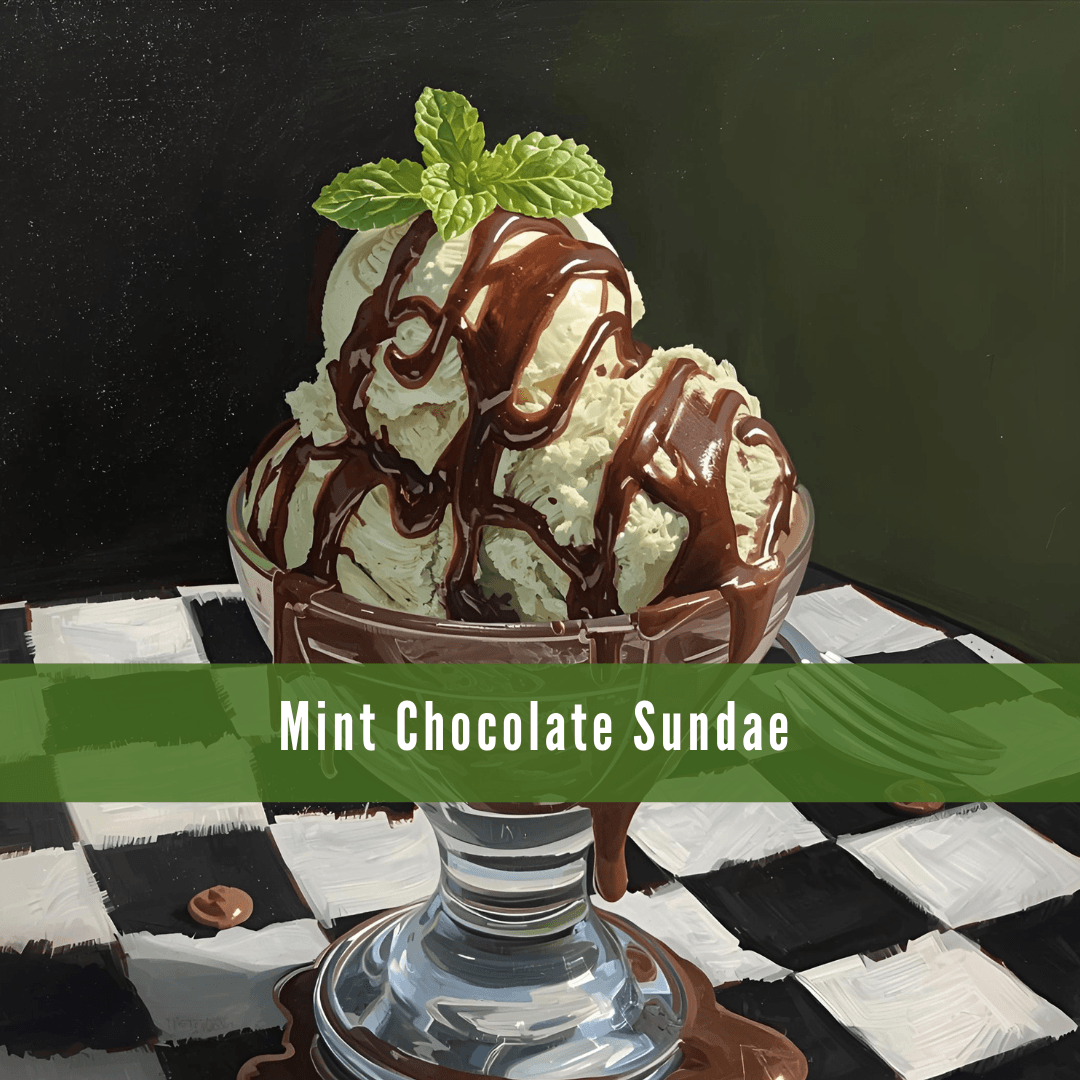
10. Vegan S’mores Sundae
The Vegan S’mores Sundae brings the classic campfire treat to a creamy, plant-based dessert. Chocolate ice cream, vegan marshmallows, and graham cracker crumbs combine for a sweet, crunchy, and gooey delight.
This gooey, chocolatey creation is a perfect addition to vegan sundae recipes, transforming the classic s’mores into a dairy-free indulgence.
Prep time: 10 minutes | Cook time: 5 minutes | Total time: 15 minutes | Servings: 2
Ingredients
- Chocolate oat milk ice cream: 2 scoops
- Vegan chocolate sauce: 2 tablespoons
- Vegan marshmallows: ¼ cup
- Graham crackers: ¼ cup, crushed
- Dark chocolate: 2 tablespoons, chopped (or vegan chocolate chips)
- Vegan whipped cream for topping
Method
- Scoop chocolate oat milk ice cream into two bowls or sundae glasses.
- Drizzle chocolate sauce over each scoop.
- Sprinkle vegan marshmallows, crushed graham crackers, and chopped chocolate evenly on top.
- A dollop of vegan whipped cream can be added for special decadence.
- Serve immediately for a gooey, chocolatey, and fun dessert experience.
Nutrition Facts (per serving)
- Calories: 410
- Carbohydrates: 50g
- Protein: 6g
- Fat: 20g
- Fibre: 4g
- Sugar: 35g
Health Benefits
Chocolate provides antioxidants, while graham crackers and marshmallows add texture without dairy. Oat milk ice cream offers healthy fats and a lighter alternative to traditional sundaes, making this treat indulgent yet easier to digest.
Conclusion
Vegan sundaes prove that indulgence and compassion can go hand in hand. These delightful treats showcase how vegan sundae recipes can be both indulgent and compassionate, offering delicious, dairy-free enjoyment for any occasion.
Perfect for any occasion, they satisfy cravings without dairy or guilt. Whether you’re hosting a party, enjoying a quiet treat, or experimenting with flavours, vegan sundaes offer fun, creativity, and health benefits. Every scoop is a sweet, sustainable, and joyful experience.
I trust you enjoyed this article on the Easy Vegan Sundae Recipes For Instant Joy And Flavour. Please stay tuned for more plant-based recipes, vegan travel tips, and lifestyle inspiration.
Take care!
— JeannetteZ
💬 Your Opinion Is Important To Me
Do you have thoughts, ideas, or questions? I’d love to hear from you. Please leave your comments below, or email me directly at Jeannette@LivingTheVeganLifestyle.org.
📚 More Vegan Lifestyle Reads
🌱 My #1 Recommendation for Online Success
Sharing my passion for vegan living — from food to fashion — has been such a rewarding journey.
If you’ve ever dreamed of building your own ethical lifestyle brand or blog, this is the best place to start.
🌟 See How Vegan Bloggers Build Online Income — Try WA Free (No Credit Card Needed)
Disclosure
This post may contain affiliate links. As an Amazon Associate and participant in other affiliate programs, I earn from qualifying purchases at no extra cost to you. Please read my full affiliate disclosure.
